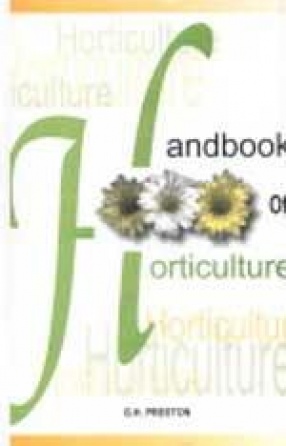Modern nomenclature and classification of many plants has called for considerable changes and rearrangement, for example, Arum Lily is no longer Richardia, it is Zantedeschia; the flowering crabs are no longer to be found under Pyrus, they are now classified under Malus, etc. etc. Such changes, although essential to an up-to-date book, can prove confusing to the gardener who persists in calling his Montbretia, Montbretia, when it is now classified as Tritonia, and so to obviate confusion we have left in both text and index cross-references from old names which have now been changed or altered in any way. The first aim of the authors and the editor has been to ensure accuracy and up-to-dateness, secondly they have striven for comprehensiveness, and the publishers feel confident that the book will prove of the greatest value to gardeners, whether tyros or "old hands", for from their own extended experience the authors and the editor have been able to judge of the points upon which the readers will be most likely to require advice. Especially have they shown just How and When the various operations should be carried out. The work is thoroughly practical and in it will be found answers to all questions likely to puzzle the amateur and beginner. Because a gardening volume is essentially a book of reference, it should be as handy in form as possible and the information it imparts should be quickly and easily accessible; for this reason a complete index has been added, popular and botanical names have been carefully cross-referenced, and where changes in classification have taken place, these are cross-referenced with the old names; the work has, as far as possible, been arranged alphabetically, and much of the matter is in the form of lists and tables, so that the book might well be called a veritable Gardening at a Glance. The first few chapters describe the general principles of gardening–laying out the garden, making beds, paths and lawns, soil improvement, manuring and propagation. Next follow chapters on subjects such as the herbaceous border, bedding schemes, bulb planting, the rock garden, the wall and paved gardens, and the water and bog gardens. In the A.B.C. of plants will be found the detailed culture of well over 700 different genera; annuals, biennials, perennials, bulbs, shrubs, climbers, ferns, greenhouse plants, etc.–how and when to propagate them, soils and situations most suited to them, and lists of the best species and varieties to grown, showing their height, colour of flowers and times of blooming. The detailed culture of all fruit, vegetables and salads is described in the same practical and comprehensive manner, and in the chapter on the greenhouse, are instructions for the care of tender plants, together with list of plants that will make a show in the house throughout the years. It will be seen that every branch and phase of gardening has been considered in detail. Moreover, the common mistake of assuming that the reader has at least some knowledge of the point in question has been avoided, the subjects being treated lucidly, fully, yet concisely. The man with very little experience will, therefore, find the book invaluable, while owing to its wide scope, accuracy and detailed instructions, it will be exceptionally useful even to the expert. The authoritative information, together with the 16 colour plates and 64 photographic illustrations, depicting accurately the chief garden operations and enabling the reader to identify with certainty nearly 200 flowers, shrubs, fruit and vegetables, make this the standard authority of the day.
Handbook of Horticulture
In stock
Free & Quick Delivery Worldwide
Bibliographic information
Title
Handbook of Horticulture
Author
Edition
1st ed.
Publisher
Length
576p., Figures; Tables; B/w Plates; Index; 22cm.
Subjects





There are no reviews yet.